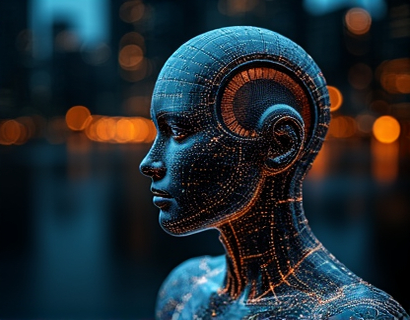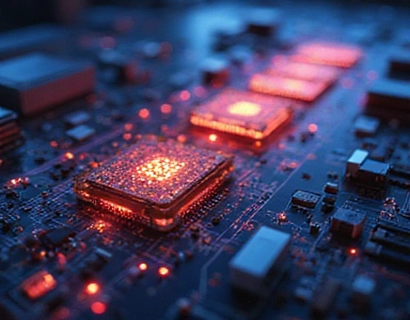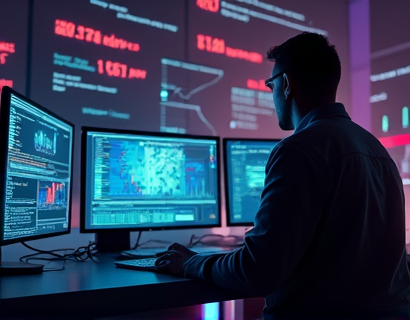Unlocking the Future of Digital Innovation: The Synergy of AI and Crypto
The intersection of artificial intelligence (AI) and cryptocurrency is paving the way for unprecedented advancements in digital technology. This convergence is not just a technological curiosity but a transformative force that is reshaping how we interact with digital systems, enhancing security, insights, and user engagement. As we delve into this topic, it's essential to understand the individual strengths of AI and cryptocurrency and how their combination can lead to groundbreaking applications.
Understanding AI and Cryptocurrency
Artificial intelligence, a subset of computer science, focuses on creating systems that can perform tasks requiring human intelligence, such as learning, reasoning, and self-correction. AI technologies include machine learning, natural language processing, and computer vision, each contributing to the development of smarter and more efficient digital solutions.
Cryptocurrency, on the other hand, is a digital or virtual currency that uses cryptography for security and operates on a decentralized network, typically a blockchain. Bitcoin, launched in 2009, was the first and most well-known cryptocurrency, but the concept has since expanded to include thousands of altcoins, each with unique features and use cases.
The combination of AI and cryptocurrency leverages the strengths of both technologies. AI can enhance the functionality and security of blockchain networks, while cryptocurrency can provide a decentralized and secure environment for AI applications to thrive.
Enhanced Security through AI and Crypto
One of the most significant benefits of merging AI and cryptocurrency is the enhancement of security measures. Blockchain's inherent security features, such as immutability and transparency, are bolstered by AI-driven security protocols. AI can detect and respond to anomalies in real-time, identifying potential threats before they become significant issues.
For instance, machine learning algorithms can analyze patterns in transaction data to spot unusual activities that may indicate fraud or hacking attempts. These algorithms can adapt and learn from new data, continuously improving the system's ability to prevent security breaches. This proactive approach to security is crucial in a landscape where cyber threats are becoming increasingly sophisticated.
Moreover, AI can enhance the security of private keys and wallet management. Biometric authentication, powered by AI, can provide a more secure and user-friendly way to access cryptocurrency wallets. Voice recognition, facial recognition, and even behavioral biometrics can ensure that only authorized users can access sensitive information.
Improved Insights and Data Analysis
AI's ability to process and analyze vast amounts of data quickly and accurately complements the transparent and immutable nature of blockchain. This synergy enables the creation of more insightful and reliable data sources for various applications.
In the context of cryptocurrency, AI can analyze blockchain data to provide insights into market trends, price movements, and user behavior. These insights can be invaluable for investors, traders, and developers looking to make informed decisions. For example, AI-driven analytics can identify patterns in trading volumes, correlation with external factors like news events, and sentiment analysis from social media to predict market movements.
Additionally, AI can help in the development of more sophisticated smart contracts. By incorporating machine learning models, smart contracts can adapt to changing conditions and execute more complex logic, reducing the need for manual intervention and increasing efficiency.
Enhanced User Engagement and Experience
The integration of AI and cryptocurrency can significantly enhance user engagement and experience. Decentralized applications (dApps) built on blockchain can leverage AI to offer personalized and intuitive user interfaces. AI can analyze user behavior and preferences to tailor the app's functionality, making it more user-friendly and engaging.
For instance, AI-powered chatbots can provide 24/7 customer support, answering queries and guiding users through the app's features. These chatbots can understand natural language, reducing the barrier to entry for users who may not be tech-savvy. This level of personalization and support can lead to higher user retention and satisfaction.
Moreover, AI can facilitate the creation of decentralized governance models, allowing users to have a say in the development and direction of dApps. By analyzing community feedback and voting patterns, AI can help ensure that decisions are made in the best interest of the user base, fostering a more democratic and inclusive ecosystem.
Driving Innovation and Growth
The combination of AI and cryptocurrency is not only about enhancing existing technologies but also about driving innovation and growth in the tech landscape. This synergy opens up new possibilities for developers and businesses looking to create cutting-edge solutions.
For developers, the integration of AI and cryptocurrency provides a rich playground for experimentation and innovation. The decentralized nature of blockchain allows for the creation of applications that are resilient to censorship and control, while AI can add layers of intelligence and automation. This combination can lead to the development of novel use cases, from decentralized finance (DeFi) platforms to AI-driven trading bots.
Businesses can leverage this technology to stay ahead of the curve. By adopting AI and cryptocurrency solutions, companies can improve operational efficiency, enhance security, and gain a competitive edge. For example, supply chain management can be revolutionized with blockchain's transparency and AI's predictive analytics, ensuring real-time tracking and optimization of logistics.
Challenges and Considerations
While the potential of AI and cryptocurrency is vast, there are challenges and considerations that must be addressed. One of the primary concerns is regulatory compliance. The decentralized and often anonymous nature of cryptocurrency transactions can raise regulatory issues, and the use of AI adds another layer of complexity. Ensuring compliance with local and international regulations is crucial to avoid legal pitfalls.
Another challenge is the technical complexity involved in integrating AI and blockchain. Developers need to have a solid understanding of both technologies to create robust and secure applications. This requires a skilled workforce and significant investment in research and development.
Additionally, there are concerns about the environmental impact of cryptocurrency mining, particularly proof-of-work (PoW) systems. The energy consumption associated with mining can be substantial, and the integration of AI may exacerbate this issue if not managed properly. Exploring more sustainable consensus mechanisms and optimizing AI algorithms can help mitigate these concerns.
Future Prospects
Looking ahead, the future of AI and cryptocurrency is bright, with numerous potential applications and innovations on the horizon. One exciting area is the development of AI-powered decentralized autonomous organizations (DAOs). These organizations can operate autonomously, making decisions based on AI-driven insights and community input, without the need for centralized control.
Another promising direction is the integration of AI with other blockchain technologies, such as the Internet of Things (IoT) and 5G networks. This convergence can lead to smarter cities, more efficient industrial processes, and enhanced connectivity, all powered by secure and intelligent systems.
Furthermore, the rise of non-fungible tokens (NFTs) and decentralized marketplaces presents new opportunities for creators and artists. AI can be used to generate unique digital assets, while blockchain ensures their authenticity and ownership. This fusion can revolutionize the way we think about digital ownership and creativity.
In conclusion, the synergy of AI and cryptocurrency is a powerful force that is transforming the digital landscape. By enhancing security, providing deeper insights, and improving user engagement, this combination is driving innovation and growth. As technology continues to evolve, the potential for new applications and solutions is vast, offering exciting opportunities for tech innovators and crypto enthusiasts alike.











































